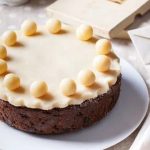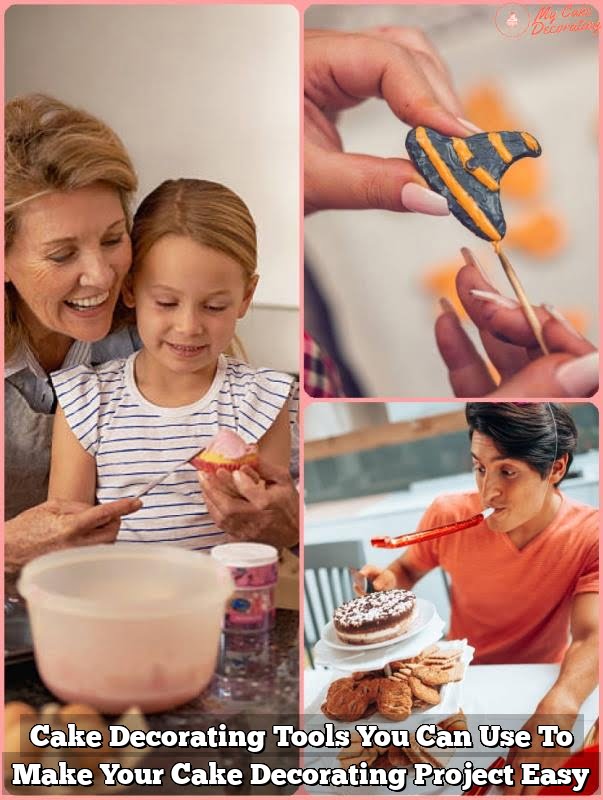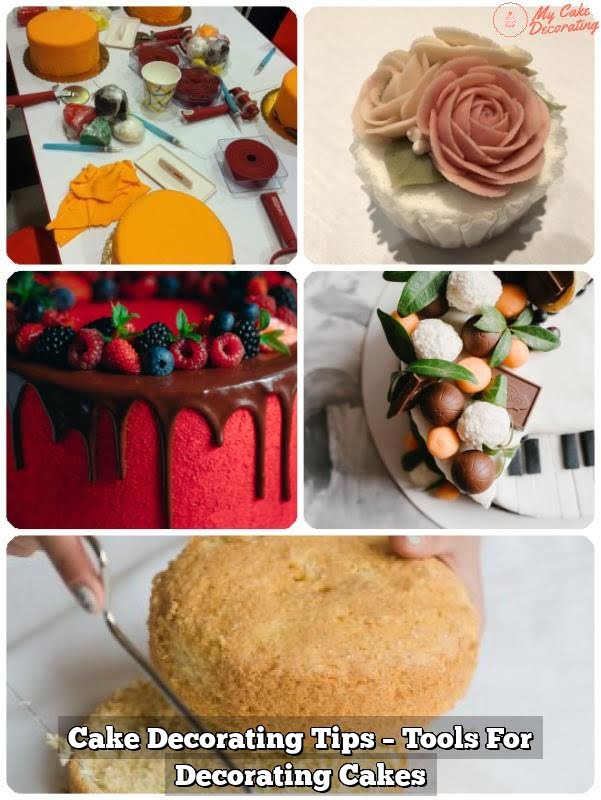What is sugarpaste for cake decorating? Sugarpaste, also known as fondant, is a versatile and pliable sugar-based dough that is used to cover and decorate cakes.
In this article, we will explore the significance of sugarpaste in cake decorating, its history and origin, key ingredients and their functions, different types and variations, tips and techniques for working with sugarpaste, common mistakes to avoid when using it, creative ways to incorporate sugarpaste in cake decorating, as well as future trends and innovations in sugarpaste for cake decorating.
Sugarpaste plays a crucial role in cake decorating as it provides a smooth and elegant finish to cakes, allowing for intricate designs and decorations to be applied on the surface. Its malleability also makes it possible to create sculpted shapes and figurines that can bring any cake design to life. Additionally, sugarpaste acts as a protective layer for the cake, keeping it moist while providing a visually appealing presentation.
The origins of sugarpaste can be traced back to ancient civilizations such as the Egyptians and Chinese who used sugar to create sweetened doughs for various culinary purposes. Over time, the art of using sugarpaste for decorative purposes evolved across different cultures and gained popularity within the realm of cake decorating. Its versatility has made it an essential tool for bakers and decorators around the world.
The History and Origin of Sugarpaste
Sugarpaste, also known as rolled fondant, has been an integral part of cake decorating for centuries. Its history and origin date back to ancient civilizations, where early forms of sugarpaste were used to adorn cakes and sweet treats. The exact origins of sugarpaste are somewhat unclear, but it is believed to have originated in ancient Egypt, where honey and fruit syrups were mixed with nuts to create a pliable confection that could be shaped and molded into intricate designs.
Early Use in Cake Decorating
Sugarpaste gained popularity in Europe during the Renaissance period, particularly in France and Italy, where skilled artisans used it to create elaborate decorations for royal banquets and feasts. It was considered a symbol of wealth and opulence, as only the wealthy could afford such intricately decorated cakes.
Modern Adaptations
In the 19th century, with the industrialization of sugar production, sugarpaste became more accessible to the general population. Today’s sugarpaste for cake decorating is typically made from a mixture of sugar, water, gelatin, and glycerin. This modern adaptation allows for greater flexibility and durability when creating decorative elements for cakes.
The history and evolution of sugarpaste demonstrate its enduring appeal and versatility in cake decorating. As new innovations continue to emerge in the world of baking and confectionery arts, it is evident that sugarpaste will remain a fundamental component in creating stunning and visually captivating cakes.
The Key Ingredients of Sugarpaste and Their Functions in Cake Decorating
Sugarpaste, also known as fondant, is a versatile and essential ingredient in cake decorating. It is a pliable and smooth mixture that can be rolled out and used to cover cakes, create decorations, and add intricate details to baked goods. When it comes to understanding what sugarpaste for cake decorating is, it’s important to take a closer look at its key ingredients and their specific functions in the art of cake decoration.
Ingredients of Sugarpaste
The main ingredients of sugarpaste typically include sugar, water, gelatin or agar, and glycerin. These ingredients work together to create a dough-like consistency that can be molded into various shapes and designs. The sugar provides sweetness and structure, while the water helps bind the ingredients together. Gelatin or agar gives the sugarpaste its elasticity, making it pliable yet durable, and glycerin adds moisture and flexibility.
Functions in Cake Decorating
Sugarpaste plays several important roles in the realm of cake decorating. Firstly, it provides a smooth and polished surface when used to cover cakes, creating a flawless canvas for further decorative elements. Additionally, its malleability allows for the creation of intricate decorations such as flowers, figures, and patterns that can elevate the overall aesthetic appeal of baked goods. Moreover, sugarpaste acts as an edible adhesive for attaching different elements together on cakes and confections.
Summary
In essence, sugarpaste is an essential component in cake decorating due to its unique properties and versatility. Understanding the key ingredients of sugarpaste and their specific functions in cake decoration is crucial for achieving successful results when working with this medium. Whether it’s covering a cake with a smooth finish or crafting elaborate decorations, sugarpaste has become a staple in the world of baking and confectionery arts.
Different Types and Variations of Sugarpaste for Cake Decorating
Sugarpaste, also known as fondant, is a versatile and popular choice for cake decorating. There are different types and variations of sugarpaste available, each with their own unique properties and uses in cake decorating.
One of the most common types of sugarpaste is rolled fondant, which is widely used for covering cakes to achieve a smooth finish. This type of sugarpaste is pliable and easy to work with, making it ideal for creating intricate designs and decorations. Another variation is the modeling paste, which has a firmer texture and holds its shape well, making it suitable for creating 3D figures and sculptures on cakes.
Colored or flavored sugarpaste is another popular variation that adds a creative touch to cake decorating. These variations are available in a wide range of colors and flavors, allowing decorators to customize their creations according to their preferences or themed events.
In recent years, innovative variations such as stretchable or elastic sugarpaste have gained popularity due to their ability to cover cakes without tearing or cracking. These advancements in sugarpaste technology have opened up new possibilities for cake decorators, allowing them to achieve flawless finishes on their creations. As the demand for more specialized sugarpaste continues to grow, it’s likely that we will see even more variations and innovations in the future.
Tips and Techniques for Working With Sugarpaste
Working with sugarpaste can be both fun and challenging, especially for those who are new to cake decorating. However, with the right tips and techniques, it can become a rewarding experience. One key tip is to ensure that you knead the sugarpaste thoroughly before use. This helps to make it more pliable and easier to work with, reducing the risk of cracks or tears when covering a cake.
Another important technique is to use cornstarch or powdered sugar when rolling out sugarpaste to prevent sticking. This will ensure a smooth and even finish on your cake. Additionally, using a non-stick rolling pin can also make the process easier. It’s essential to roll out the sugarpaste evenly to achieve a professional look.
When covering a cake with sugarpaste, it’s helpful to work quickly but carefully to avoid drying out the paste. Smooth surfaces by using specially designed tools for smoothing and shaping, ensuring an even appearance. It’s also crucial to plan ahead and visualize how you want your finished cake to look. This will help you anticipate any challenges and make adjustments as needed.
| Tips | Techniques |
|---|---|
| Knead sugarpaste thoroughly before use | Use cornstarch or powdered sugar when rolling out sugarpasteto prevent sticking |
| Roll out the sugarpaste evenlyto achieve a professional look | Work quickly but carefully when covering a cake with sugarpaste |
Common Mistakes to Avoid When Using Sugarpaste
When working with sugarpaste for cake decorating, it is important to be mindful of certain common mistakes that can affect the overall outcome of your confectionery masterpiece. By avoiding these pitfalls, you can ensure that your sugarpaste creations turn out as intended and impress your guests with both their appearance and taste.
Here are some of the common mistakes to avoid when using sugarpaste for cake decorating:
1. Over-Kneading: One of the most common mistakes when working with sugarpaste is over-kneading it. Overworking the sugarpaste can cause it to become too soft and sticky, making it difficult to work with and resulting in a loss of shape and definition in your decorations.
2. Using Too Much Cornstarch or Icing Sugar: While it is essential to use cornstarch or icing sugar to prevent the sugarpaste from sticking to surfaces, using too much can dry out the sugarpaste, causing it to crack and become brittle.
3. Not Allowing Sugarpaste to Rest: After kneading and shaping the sugarpaste, it is crucial to allow it to rest for a few minutes before using it for decorating. This allows the paste to firm up slightly, making it easier to handle and less prone to stretching or tearing.
By being mindful of these common mistakes and taking steps to avoid them, you can ensure that your sugarpaste decorations turn out beautifully every time.
Creative Ways to Incorporate Sugarpaste in Cake Decorating
Sugarpaste, also known as fondant, is a versatile and essential ingredient for cake decorating. Its pliable texture and ability to be molded into various shapes make it a popular choice for creating unique designs on cakes. So, what is sugarpaste for cake decorating? It is a type of icing that can be rolled out and draped over cakes to achieve a smooth, polished finish, making it the perfect canvas for creative cake decorations.
When it comes to incorporating sugarpaste in cake decorating, the possibilities are endless. Here are some creative ways to use sugarpaste to elevate your cake designs:
- Creating intricate sugar flowers: Sugarpaste can be shaped and molded into beautiful botanical-inspired designs such as roses, peonies, or daisies to add a touch of elegance to any cake.
- Designing themed cake toppers: Whether it’s a birthday celebration, wedding, or baby shower, sugarpaste can be sculpted into custom figurines or symbols that reflect the theme of the occasion.
- Adding texture and dimension: Using embossing tools or stencils, sugarpaste can be imprinted with patterns or textures to give cakes an extra layer of visual interest.
Incorporating sugarpaste in cake decorating allows for endless creativity and innovation. Whether you are a professional baker or an amateur enthusiast, experimenting with different techniques and designs using sugarpaste can lead to stunning and unique results. Experiment with different colors, shapes, and embellishments to bring your creative vision to life on every cake you decorate.
Future Trends and Innovations in Sugarpaste for Cake Decorating
In conclusion, the future of sugarpaste for cake decorating looks bright and innovative. As the demand for unique and creative cakes continues to rise, so does the need for new and innovative sugarpaste products. With advancements in technology and food science, we can expect to see new types and variations of sugarpaste that offer improved texture, taste, and workability.
Additionally, as consumers become more conscious of their dietary choices, there is a growing demand for healthier alternatives in cake decorating. Future trends in sugarpaste may include the development of organic or natural sweeteners, as well as allergen-friendly options to cater to a wider range of customers.
Furthermore, with the increasing popularity of social media platforms such as Instagram and Pinterest, there is a focus on visually appealing cakes that are not only delicious but also aesthetically pleasing. This has led to an emphasis on creating intricate designs and detailed decorations using sugarpaste. In the future, we can expect to see new techniques and tools that will allow decorators to push the boundaries of what is possible with sugarpaste.
Frequently Asked Questions
What Is Sugar Paste for Cake Decorating?
Sugar paste, also known as fondant, is a pliable dough-like substance used in cake decorating. It can be rolled out and draped over cakes to create a smooth finish for decorating with various designs.
Is Sugarpaste the Same as Icing?
Sugarpaste and icing are not the same. While both are used for cake decorating, sugarpaste is a firmer and more pliable substance that can be rolled out and draped over cakes for a smooth finish. Icing, on the other hand, is generally softer and used for piping or spreading on top of cakes.
How to Make Sugar Paste for Cake?
To make sugar paste for cake decorating, you will need confectioners’ sugar, gelatin, glycerin, and water. The ingredients are mixed together to form a smooth dough-like consistency that can be colored and shaped to decorate cakes. There are many recipes available online for making sugar paste at home.

Welcome to my blog about home and family. This blog is a place where I will share my thoughts, ideas, and experiences related to these important topics. I am a stay-at-home mom with two young children. I hope you enjoy reading it! and may find some helpful tips and ideas that will make your home and family life even better!





